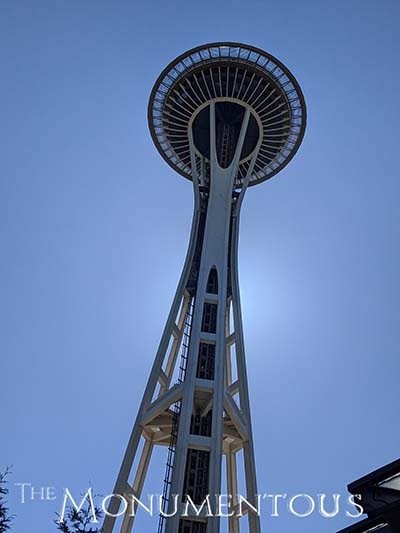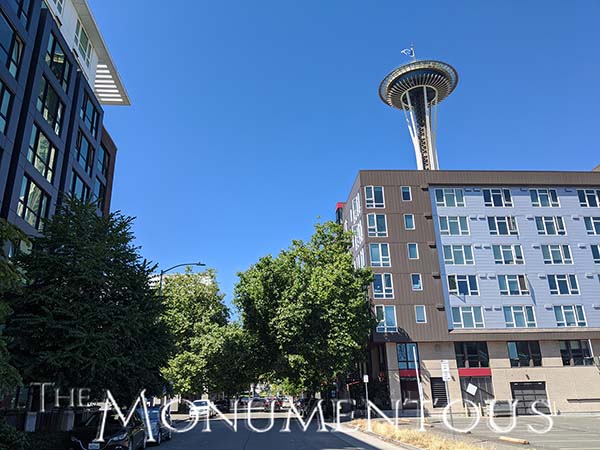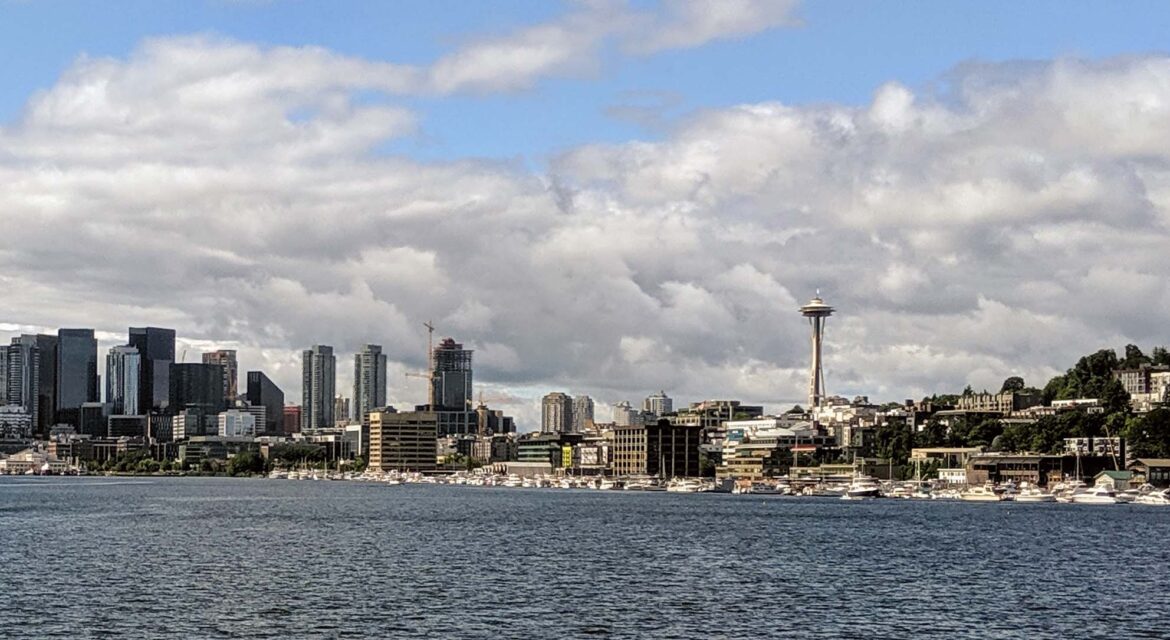 Numerous buildings and structures have become associated with certain cities or regions, but few have done so in a way that resonates as deeply as the Space Needle has done with the city of Seattle. That connection is so profound that the structure is recognized as an icon not only of the city but of the entire Pacific Northwest region.
Numerous buildings and structures have become associated with certain cities or regions, but few have done so in a way that resonates as deeply as the Space Needle has done with the city of Seattle. That connection is so profound that the structure is recognized as an icon not only of the city but of the entire Pacific Northwest region.
The Space Needle has become an icon on account of its unique design and the incredible experiences that it has provided visitors ever since it was created, both of which have been cultivated and enabled in an active manner by stakeholders who did not have public funds available to them. Their efforts resulted in the creation of an economic driver for the whole city that has also profoundly impacted the culture of the region.

“The Age of Space”
The history of the Space Needle is a journey from a doodle to an internationally recognized icon of Seattle. Inspired by a skyline-defining broadcast tower in Stuttgart, Seattle hotel executive Edward E. Carlson came up with a sketch for a structure that would become a top attraction for the 1962 World’s Fair that was to be held in Seattle. The fair had the theme of “The Age of Space”, which came to define the shape and function of the Space Needle.
 Privately financed and built, the Space Needle officially opened the first day of the World’s Fair. At 605 feet high, the structure was the tallest west of the Mississippi River when it was completed. Since it was not financed by the city, land had to be purchased within the fairgrounds of the World’s Fair. After the fair, a radio broadcast booth was built on the Space Needle for a local radio station. It became the hub of the Seattle Center, which featured numerous other attractions that have since been further expanded.
Privately financed and built, the Space Needle officially opened the first day of the World’s Fair. At 605 feet high, the structure was the tallest west of the Mississippi River when it was completed. Since it was not financed by the city, land had to be purchased within the fairgrounds of the World’s Fair. After the fair, a radio broadcast booth was built on the Space Needle for a local radio station. It became the hub of the Seattle Center, which featured numerous other attractions that have since been further expanded.
In 1982, the SkyLine level was added at the height of 100 feet to host weddings, receptions, and business meetings. In 1999, Seattle’s Landmarks Preservation Board named it an official City of Seattle Landmark. A renovation in 2000 included the construction of the Pavilion Level, SpaceBase retail store and SkyCity restaurant.
Another renovation in 2017 was designed to reveal more the tower’s internal structure. It created a multi-level, floor-to-ceiling glass viewing experience with an outdoor observation level. Open-air glass walls and Skyriser glass benches were also added.
The trip to the top of the Space Needle as well as the views it provides have drawn in audiences ever since the structure was completed for the World’s Fair. Numerous other activities at the top and around the Space Needle have allowed it to serve as much more than an observation deck though.

Activity Inside and Around the Space Needle
 Taking 43 seconds to reach from the ground on one of the elevators, the open-air observation deck at the top of the Space Needle allows visitors to get a 360-degree view of the entire area. At 520 feet off the ground, the 11-foot-tall glass windows give unobstructed views of downtown Seattle and surrounding neighborhoods like Queen Anne, Lake Union and Ballard. The natural surroundings include views of the Olympic and Cascade Mountains, Mount Rainier, Mount Baker, Elliott Bay, and the numerous surrounding islands in Puget Sound.
Taking 43 seconds to reach from the ground on one of the elevators, the open-air observation deck at the top of the Space Needle allows visitors to get a 360-degree view of the entire area. At 520 feet off the ground, the 11-foot-tall glass windows give unobstructed views of downtown Seattle and surrounding neighborhoods like Queen Anne, Lake Union and Ballard. The natural surroundings include views of the Olympic and Cascade Mountains, Mount Rainier, Mount Baker, Elliott Bay, and the numerous surrounding islands in Puget Sound.
The upper observation level in the Space Needle is connected by the Oculus Stairs to the Loupe, the world’s first rotating glass floor. The floor can complete a rotation in various lengths of time from 20 to 90 minutes. Visitors can walk or stretch out on the clear floor to get a unique look at the infrastructure of the Space Needle itself as well as the numerous attractions in the Seattle Center below.
 The Seattle Center is a hub for arts, educational, tourism and entertainment activities of all types. Along with the Space Needle, it also contains various landmarks like the International Fountain, commercial centers like the Seattle Center Armory and museums like the Discovery Center and the Pacific Science Center. The popularity of the location has also enabled the creation of the Chihuly Garden and Glass Museum as well as the distinctive Museum of Pop Culture, or MoPOP.
The Seattle Center is a hub for arts, educational, tourism and entertainment activities of all types. Along with the Space Needle, it also contains various landmarks like the International Fountain, commercial centers like the Seattle Center Armory and museums like the Discovery Center and the Pacific Science Center. The popularity of the location has also enabled the creation of the Chihuly Garden and Glass Museum as well as the distinctive Museum of Pop Culture, or MoPOP.
These experiences have further fueled interest in and activity around the Space Needle. However, the identity that it has defined for the city and region is the real draw, which has been actively cultivated in numerous ways over the decades.

An Icon of Seattle
 Instantly redefining the Seattle skyline, the Space Needle has been impossible to ignore ever since it was built. The unique design of the Space Needle has undoubtedly helped it become an icon of Seattle, but numerous initiatives have further connected it to the region and allowed it to become a part of the culture.
Instantly redefining the Seattle skyline, the Space Needle has been impossible to ignore ever since it was built. The unique design of the Space Needle has undoubtedly helped it become an icon of Seattle, but numerous initiatives have further connected it to the region and allowed it to become a part of the culture.
Various pieces of art have been installed around the Space Needle, cultivating a sense of community around the Space Needle itself. These pieces are in addition to ones surrounding the Chihuly Garden as well as the nearby Olympic Sculpture Park, which features numerous artworks that are tied to the people and community.
Stakeholders are also actively involved in this community. The Space Needle Foundation is committed to elevating the community’s collective future by supporting organizations that are at the forefront of transforming lives and make a positive difference in the Puget Sound region. One of the most prominent ways they do so is with the Base 2 Space stair climb fundraising event. Proceeds benefit the Fred Hutchinson Cancer Research Center and the Space Needle Foundation itself.
These activities are part of what has enabled the Space Needle to appear in countless films, TV shows and other works of art, often representing Seattle or the Pacific Northwest as a whole. That connection to the community is further bolstered with special events. Every year on New Year’s Eve, the Space Needle celebrates with a fireworks show as crews mount pyrotechnics along the entire Space Needle structure from top to bottom. The show is broadcasted regionally as well as picked up internationally as the endcap of the Sydney-to- Seattle global fireworks shows.
 Frequently decorated for the city’s events, it has also saluted the success of Seattle’s sports teams by painting the white roof with logos and congratulatory messages, hoisting flags and more. All of this has allowed the Space Needle to become a natural part of the city’s setting. This development has fueled numerous direct revenue opportunities throughout the Space Needle, the Seattle Center and the whole region.
Frequently decorated for the city’s events, it has also saluted the success of Seattle’s sports teams by painting the white roof with logos and congratulatory messages, hoisting flags and more. All of this has allowed the Space Needle to become a natural part of the city’s setting. This development has fueled numerous direct revenue opportunities throughout the Space Needle, the Seattle Center and the whole region.

Driving an Economic Impact Across Seattle
The Space Needle has driven a great deal of revenue for the privately-owned structure. At the SpaceBase retail center, visitors can purchase a variety of items that range from the practical to the decorative. Space Needle Mini-Building Blocks, a 1962 World’s Fair Puzzle and a Space Needle DVD are just a few of the unique items that are available for purchase. That direct source of revenue is in addition to the tickets for the Space Needle that can be purchased in numerous ways, at a variety of levels. A “see it all” package provides visitors with a pass into the Space Needle along with various other Seattle Center attractions.
 As a further source of direct revenue, the Space Needle has become a top spot for receptions, parties and events of all types. Located at the 100-foot level, the Skyline event space offers an incredible view of Seattle and the surrounding region. Additionally, the Atmos Café features an espresso bar, beer & wine, and local treats from local artisans. Other food and beverage options include a specialty sparking wine spritz upon arrival, a flight of four wines with local bites and reserved seating on the outdoor deck.
As a further source of direct revenue, the Space Needle has become a top spot for receptions, parties and events of all types. Located at the 100-foot level, the Skyline event space offers an incredible view of Seattle and the surrounding region. Additionally, the Atmos Café features an espresso bar, beer & wine, and local treats from local artisans. Other food and beverage options include a specialty sparking wine spritz upon arrival, a flight of four wines with local bites and reserved seating on the outdoor deck.
The economic impact of the Space Needle is evident all across the site, but this impact is just as evident throughout the rest of Seattle. The Space Needle is prominently featured in maps, guides and tours of the city, providing countless businesses with a means to promote their services and identify with customers. Stores all over the region sell merchandise that features the Space Needle in one way or another.
Becoming a shorthand symbol for Seattle and the entire Pacific Northwest has opened up countless opportunities for businesses across Seattle and beyond. In doing so, the Space Needle highlights the possibilities monuments have to positively impact the economy and culture of a city to define a legacy for an entire region.

An Enduring Symbol for Seattle
 One of the most photographed structures in the United States, approximately 1.3 million guests visit the Space Needle per year and nearly 60 million people have visited the tower since it opened in 1962. However, the true impact of the Space Needle can be seen in much smaller ways, whether it’s the logos, maps or products that can be seen all across the city that prominently feature the Space Needle in one way or another.
One of the most photographed structures in the United States, approximately 1.3 million guests visit the Space Needle per year and nearly 60 million people have visited the tower since it opened in 1962. However, the true impact of the Space Needle can be seen in much smaller ways, whether it’s the logos, maps or products that can be seen all across the city that prominently feature the Space Needle in one way or another.
The product of an endeavor to create an enduring symbol for Seattle, the Space Needle is the result of dedication, investment and timing. This confluence of circumstances created a monument that has enabled an enduring impact for private stakeholders, the city of Seattle and audiences across multiple eras.

